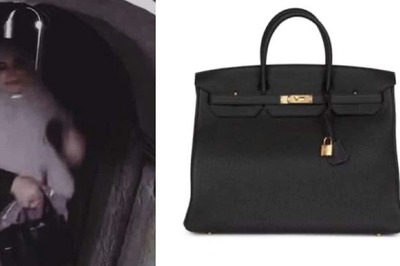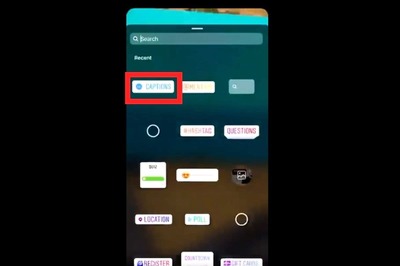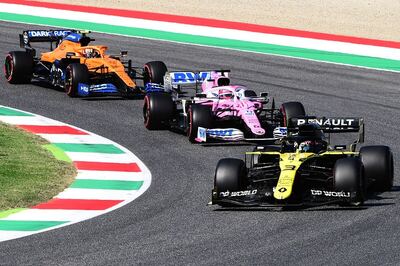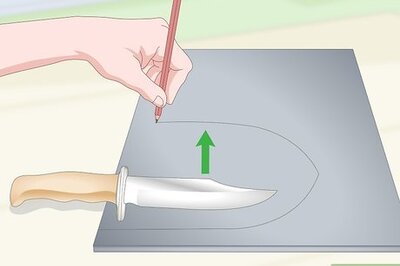
views
“Maknae” (막내) Meaning in K-pop & Korean Culture
“Maknae” is Korean for the youngest member of a group. People use it to talk about the youngest member of any group, including families, work teams, or a bunch of friends. In K-pop, the “maknae” is always the youngest person in the group. Maknae” is usually pronounced MAHK-nay by American English speakers and MAHG-nae by Korean speakers. “Maknaes” are often seen as being innocent, charming, and cute, making them especially popular with fans.
Types of Maknae (막내)
K-pop fans have created types of “maknaes” based on personalities. K-pop stans sometimes divide “maknaes” into different general categories. Most of these categories are based on traits a “maknae” has that aren’t typical for the youngest member of a group in Korea. Examples of different types of “maknae” are: Evil Maknae – They tend to be playful and mischievous and like to play pranks on older members. Giant Maknae – They’re the youngest members but tall for their age or taller than other members in the group. Innocent Maknae – cute and pure image Maknae in Charge – The youngest member who’s unofficially but not-so-secretly in charge of the group. Fake Maknae – They’re not actually the group's youngest member, but their appearance and energy make them seem younger than their age.
Some K-pop “maknaes” have earned unique titles from fans. K-pop stans have given the most popular and iconic “maknaes” their own nicknames. These nicknames tend to reference something special about the “maknae” and aren’t used to talk about others. Some examples of unique “maknae” nicknames are: Jungkook (BTS) – The Golden Maknae Lisa (BLACKPINK) – Royal Maknae I.N. (Stray Kids) – Maknae on Top Eunchae (LE SSERAFIM) – Most Maknae Ever Sehun (EXO) – Spoiled Maknae Tzuyu (TWICE) – Savage Maknae Huening Kai (TXT) – Diamond Maknae
Official Positions in K-pop Groups
K-pop group members have official positions based on their skills. The entertainment company the group signed with usually determines the positions in the group based on each member's talents, skills, and appearance. “Maknae” isn’t an official position, and they can hold any of the other roles in a K-pop group. They’re even occasionally the leader of the group, though an older group member usually holds that position. Official K-pop group positions and their responsibilities include: Leader: The leader is usually one of the older members of the group. They act as a mentor for the rest of the members and are the main spokesperson for the group. Visual: The visual is usually the most attractive member of the group based on Korean beauty standards. Sometimes, a group has a visual line of several of the most attractive members. Face: The face is the group member who brings public attention to the group. They often get invited on talk shows and variety shows. The face can overlap with other positions (most commonly the leader or visual and may change with every comeback. Center: The center is most often in the middle of choreography, especially during a song’s chorus. It’s often a visual or dancer but can change for each comeback or song. Main vocal: The main vocal is the best singer in the group. They often get the most challenging singing parts and more lines in songs than other members. Main rapper: The main rapper is the best rapper in the group and gets most of the rap parts in a song. They also tend to write their own lyrics. Main dancer: The main dancer usually has the best dancing skills and gets solo dancing parts. They may also take the lead when learning new choreography. Lead & Sub Vocal, Rapper, or Dancer: The Lead member in each area is usually the second-best in the group. The lead vocal and rapper often begin the chorus or rapping parts. The lead dancer often dances in front. Vocal, Rap, & Dance Lines: This is how the singers, rappers, and dancers are referred to within the main group.
Korean Age Hierarchy in K-pop
South Koreans use age to know how to interact with each other. When Koreans meet, one of the first things they ask each other is, “How old are you?” They use that information to figure out how they should act toward the other person. In K-pop, older members are expected to act as leaders or mentors for younger members. Younger members run errands, perform chores, and bow more deeply when greeting older people. Before 2023, Korean age was based on the number of new years they’ve lived through + 1. However, South Korea began using the international age-counting system used in other countries (like the U.S.) on June 28, 2023.
Fans organize K-pop groups into informal lines based on age. Much like the terms “vocal line” and “rap line” are used to describe the singers or rappers in a group, “hyung” line, “unnie” line, and “maknae” line are used to describe groups of older and younger members in a group. “Unnie line” refers to the group of older members in a female K-pop group. “Hyung line” refers to the older members of a male K-pop group. The “maknae line” is made up of the younger members of a K-pop group.




















Comments
0 comment